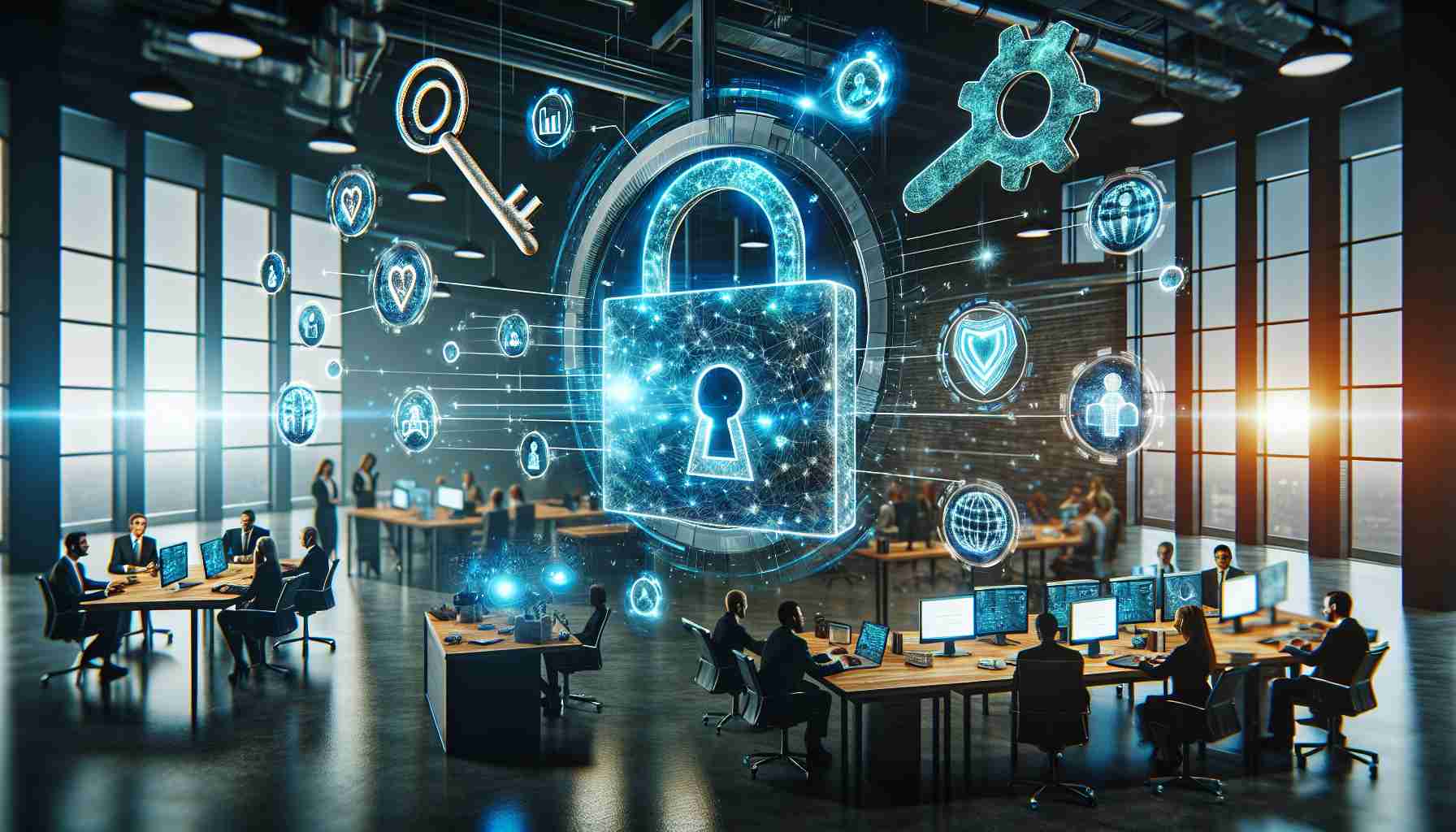Digital transformation and hybrid work present numerous challenges related to safety and collaboration. In the era of emerging threats such as deepfake and ransomware attacks, organizations must vigorously fight to ensure integrity and trust in digital communication and collaboration spaces.
The Rise of Deepfake
Deepfake poses a serious threat to safety and collaboration. Visual and audio manipulation can lead to false representation of content, making it difficult to differentiate between genuine communication and manipulated messages, images, sounds, or videos. Deepfake has become so advanced that it can adapt to the user in real-time.
Such attacks generate the risk of disinformation, impersonation, and corporate espionage. They can also lead to a loss of trust in professional relationships and the unwitting disclosure of confidential organizational data.
Organizations must invest in effective security measures, such as advanced authentication protocols and real-time content verification, to minimize the risks associated with deepfake.
The Increasing Effectiveness of Ransomware Attacks
Ransomware attacks are becoming increasingly sophisticated, threatening the security of digital interactions. Ransomware can paralyze communication channels, compromising the confidentiality and availability of critical information.
In the context of real-time data exchange-based collaboration, the consequences are enormous. The potential loss of confidential data, intellectual property, and operational continuity can result in significant financial and reputational damage.
The integration of collaboration systems creates even more points of vulnerability, making it difficult to quickly eliminate ransomware infections.
Organizations must implement proactive security measures, such as strong encryption, regular system audits, and employee training, to strengthen their defense mechanisms against evolving ransomware threats.
The Dual Role of Artificial Intelligence in Cybersecurity
Artificial intelligence (AI) serves as both an innovative defense mechanism and a potential threat to collaboration spaces. AI provides advanced threat detection and response, but at the same time, it can be exploited by cybercriminals.
AI-based attacks, such as advanced phishing campaigns or automated social engineering, can leverage the vulnerabilities of collaboration platforms to achieve security breaches.
The adaptability and autonomy of AI systems can enable attackers to conduct more dynamic and evasion-based attacks, circumventing traditional defense mechanisms.
To secure collaboration spaces in the future, it is necessary to develop AI capable of surpassing potential threats, enabling proactive and resilient responses to dangers.
The Transformative Power of Quantum Computing
Quantum computers may be as important for technological advancement as AI. With significantly greater computational power, they can solve complex problems that conventional computers would take much longer to address or may not be able to solve at all.
Quantum computers have immense potential in optimization, such as supply chain management, drug development, and financial modeling.
However, they also pose a threat to cryptography as they can break traditional encryption algorithms.
Nevertheless, quantum computers have the potential to create more secure technologies based on the principles of quantum mechanics, such as quantum key distribution, which enables secure communication.
It is necessary to take action to develop defense systems against quantum computers that can withstand these threats while ensuring the safety of digital infrastructures.
Comprehensive Training and Embracing Security
Ransomware, deepfake, AI, quantum computers – all these threats can be effectively minimized through coordinated training and the implementation of appropriate security measures.
As digital transformation progresses and hybrid work evolves, understanding best security practices is of crucial importance for users. It is important to remember that humans remain the first line of defense against cyber threats.
Therefore, it is necessary for employees to receive adequate security training, including protocols for secure communication, recognizing phishing attempts, and adhering to strong authentication procedures.
Introducing new technologies can be challenging, so clear communication and user-friendly interfaces are necessary to increase awareness and understanding of the importance of security.
Overcoming these challenges also requires collaboration from all parties, including the industry and organizational leaders, to develop effective security frameworks that can effectively tackle the growing threats in digital collaboration and communication spaces.
FAQ:
1. What threats does deepfake pose?
Deepfake poses a serious threat to safety and collaboration, allowing for visual and audio manipulation. It can lead to false representation of content, undermining the authenticity of communication.
2. What are the consequences of ransomware attacks?
Ransomware attacks can result in communication paralysis, breach of data confidentiality, and loss of access to important information. They can lead to significant financial and reputational damages.
3. How can artificial intelligence be both a defense tool and a threat?
Artificial intelligence can provide advanced threat detection and response, but it can also be exploited by cybercriminals to conduct attacks. AI-based attacks can exploit vulnerabilities in collaboration platforms.
4. What is the potential of quantum computers?
Quantum computers have significantly greater computational power than traditional computers, enabling them to solve complex problems. They have potential in optimization, supply chain management, drug development, and financial modeling.
5. How important are training and security measures in countering threats?
The presence of threats such as ransomware, deepfake, AI, and quantum computers highlights the need for coordinated training and the implementation of appropriate security measures. Employees should receive security training and use protocols for secure communication and authentication procedures.
Glossary:
– Deepfake: Visual and audio manipulation that enables the creation of falsified content, making it difficult to differentiate between genuine and manipulated communication.
– Ransomware: Malicious software that blocks access to data until a ransom is paid. It can cause financial and reputational losses for organizations.
– Artificial Intelligence (AI): Advanced computer systems capable of performing tasks that require human intelligence, such as data analysis and processing.
– Quantum Computer: A computer that utilizes the principles of quantum mechanics to process information. It has greater computational power than traditional computers.
– Cyber Threats: Potential dangers related to digital security, such as hacking attacks, data breaches, and online scams.
Suggested Links:
– Australian Government’s Cyber Security Center
– Cybersecurity and Infrastructure Security Agency (CISA)
– European Union Agency for Cybersecurity (ENISA)
– National Cyber Security Centre (NCSC)
– National Institute of Standards and Technology (NIST)
The source of the article is from the blog agogs.sk
